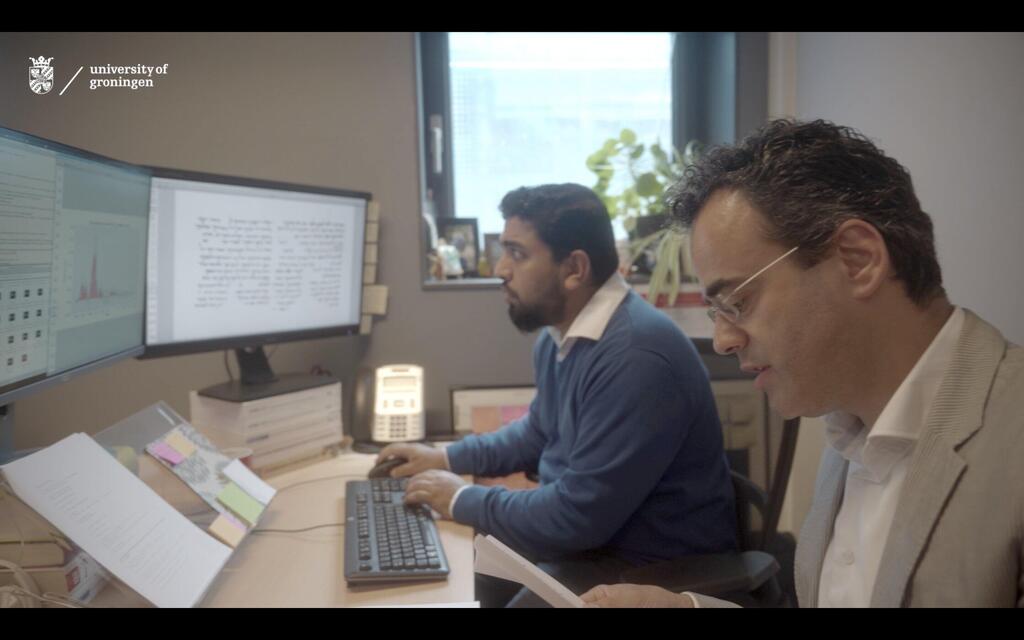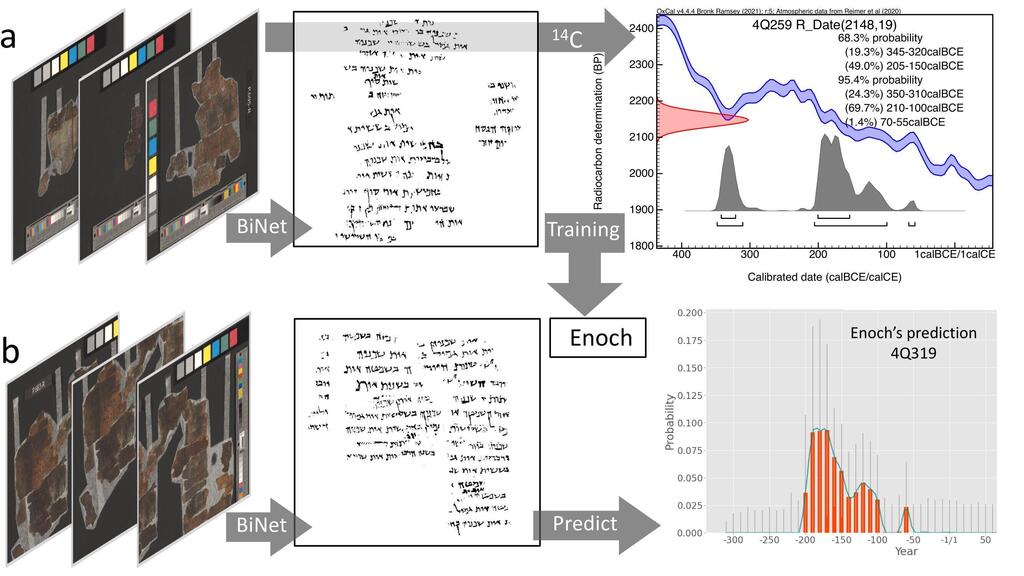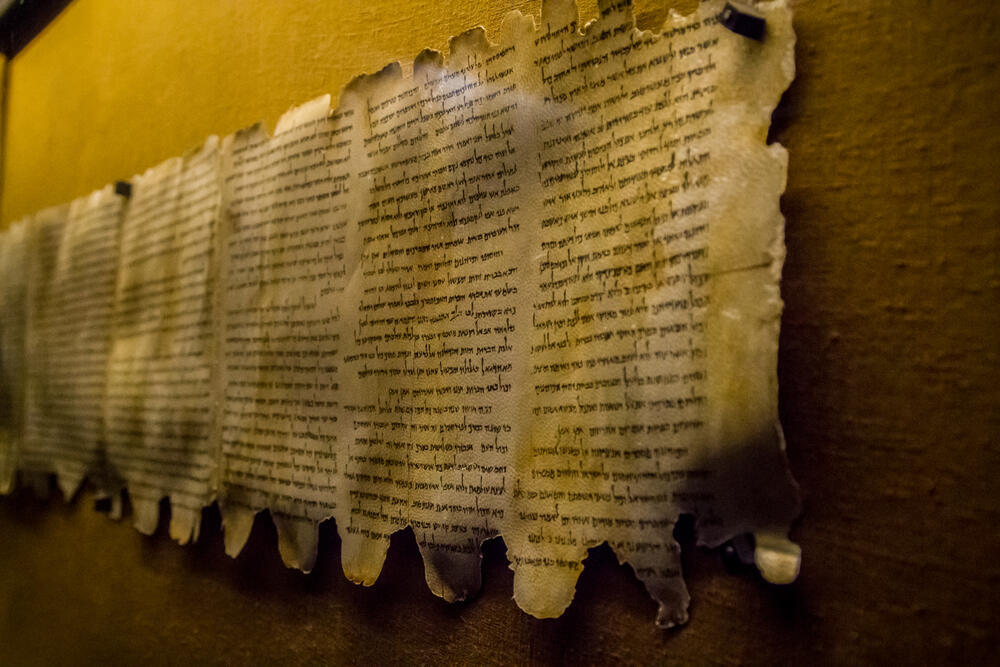Since the moment the Dead Sea Scrolls emerged from desert caves into scholarly hands, researchers have found the task of dating individual manuscripts to be an uphill battle. While it was generally accepted that the texts hailed from a broad stretch between the 3rd century BCE and the 2nd century CE, pinning down precise dates for specific scrolls remained stubbornly elusive. Now, a team of international researchers has harnessed artificial intelligence, radiocarbon science, and handwriting analysis to build a groundbreaking model that suggests many of the scrolls are older than anyone previously believed.
Until now, scholars largely leaned on paleography—the art of dating documents by their script. But this method, while insightful, often rested on shaky empirical foundations. Among the few scrolls that actually include a written date in Hebrew or Aramaic (ranging from the 5th century BCE to the early 2nd century CE), gaps in style and substance made it difficult to place the remaining 1,000+ manuscripts and fragments that make up the Qumran collection with any certainty.
That longstanding gap has now been bridged thanks to a research initiative under the ERC project The Hands that Wrote the Bible. Drawing on 24 carbon-dated scroll fragments and advanced machine learning tools, researchers constructed a Bayesian regression model that for the first time links writing styles with anchored dates from the 4th century BCE through the 2nd century CE. The results, published in PLOS ONE, a peer-reviewed open access mega journal published by the Public Library of Science, provide what scholars have long lacked: an empirical foundation for dating these ancient texts.
At the heart of this breakthrough is a predictive model named Enoch, developed by a team at the University of Groningen in the Netherlands. To power Enoch’s insights, the researchers fed it through a deep neural network called BiNet, designed to recognize ink stroke patterns with pinpoint precision. This allowed the team to quantify subtle variations in handwriting—variations previously left to subjective interpretation.
3 View gallery


Professor Mladen Popović on the right during the research
(Photo: University of Groningen)
In blind tests, the model managed to predict known carbon-dated ages within a margin of ±30 years—tighter than what radiocarbon dating alone could typically offer for the 300–50 BCE range. Thanks to this new tool, more than a thousand scroll manuscripts can now be placed on the historical timeline with a level of accuracy that would have been unthinkable just a decade ago.
Professor Mladen Popović, with expertise in Old Testament and Ancient Judaism, with special attention for Qumran and the Dead Sea Scrolls, led the project and applied Enoch’s capabilities to re-examine several prominent texts. What they found wasn’t just fine-tuning—it was timeline-shifting.
By fusing digital handwriting analysis with AI-guided radiocarbon modeling, Enoch became the first system capable of delivering date estimates directly from images, complete with explainable logic and built-in transparency. The model offers a level of objectivity that traditional paleography simply couldn’t reach.
The implications are far-reaching. Findings suggest that scrolls written in the Hasmonean script may have originated well before the previously assumed 150–50 BCE window, and that the Herodian script, once thought to have emerged later, was already in use by the late 2nd century BCE. In short, these two script styles likely coexisted earlier than assumed—a revision that reshapes how scholars understand the intellectual and political landscape of ancient Judea during the Hellenistic and early Roman eras.
3 View gallery


Writing styles in digitized manuscripts were analyzed using BiNet, a deep neural network previously developed to detect ink trace patterns in handwriting
(Illustration: Maruf Dhali, University of Groningen)
This new framework doesn’t just fine-tune paleographic charts; it recasts the cultural and historical backdrop in which Judaism—and eventually Christianity—were taking shape. It offers a more refined lens through which to view literacy rates, sectarian life, and the ripple effects of rising urbanization and Hasmonean rule.
Get the Ynetnews app on your smartphone: Google Play: https://bit.ly/4eJ37pE | Apple App Store: https://bit.ly/3ZL7iNv
Among the newly re-dated texts are some of the most iconic names in biblical literature. One scroll of Daniel (4Q114), for example, is now believed to have been written by an anonymous scribe during the 2nd century BCE. Ecclesiastes (4Q109), long credited to King Solomon in the 10th century BCE, now appears to have emerged in the 3rd century BCE, firmly within the Hellenistic age.
Taken together, these findings offer an unprecedented glimpse not just into the history of the scrolls themselves, but into the very hands that once shaped scripture—offering scholars a clearer view of the ancient minds who helped write the biblical tradition as we know it today.


